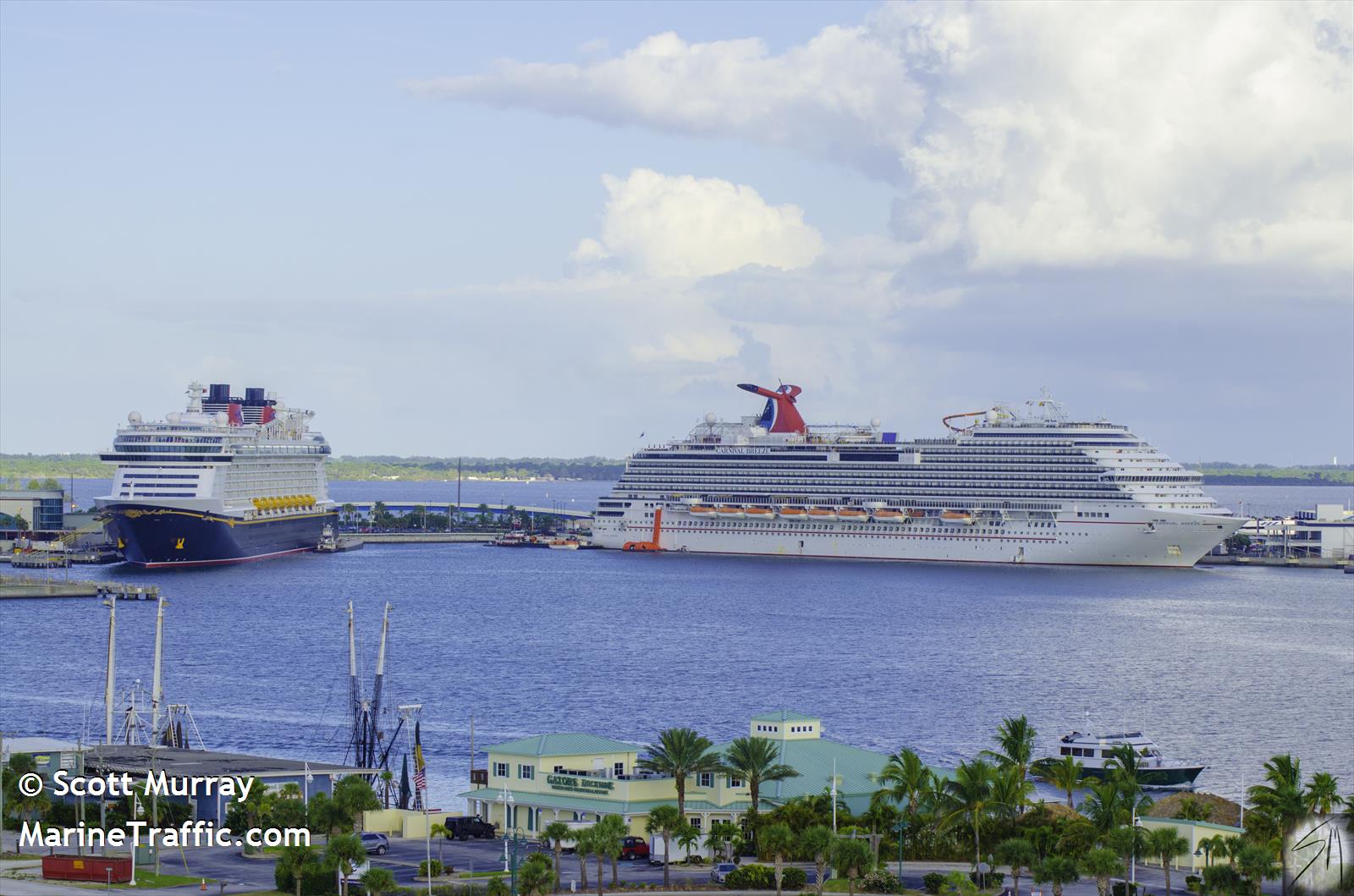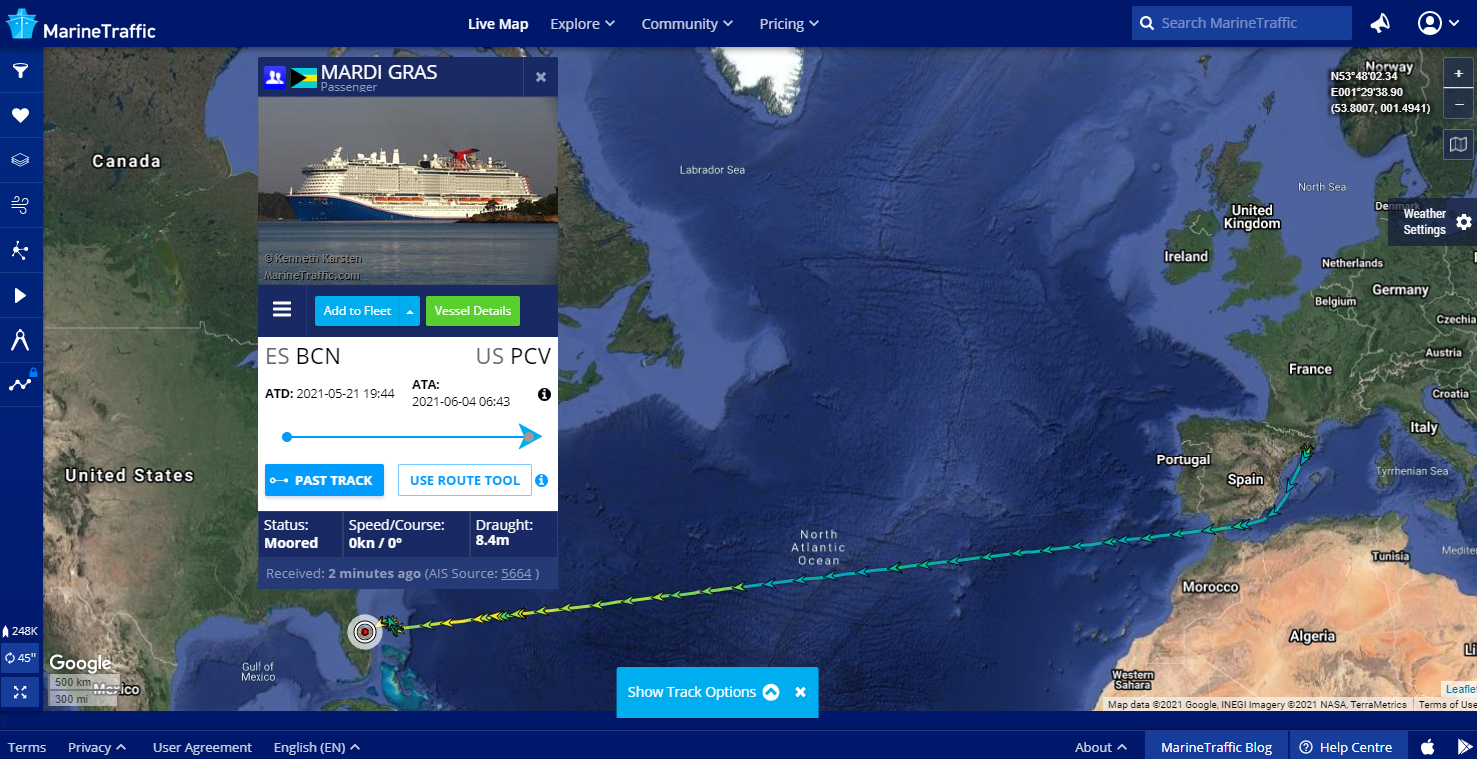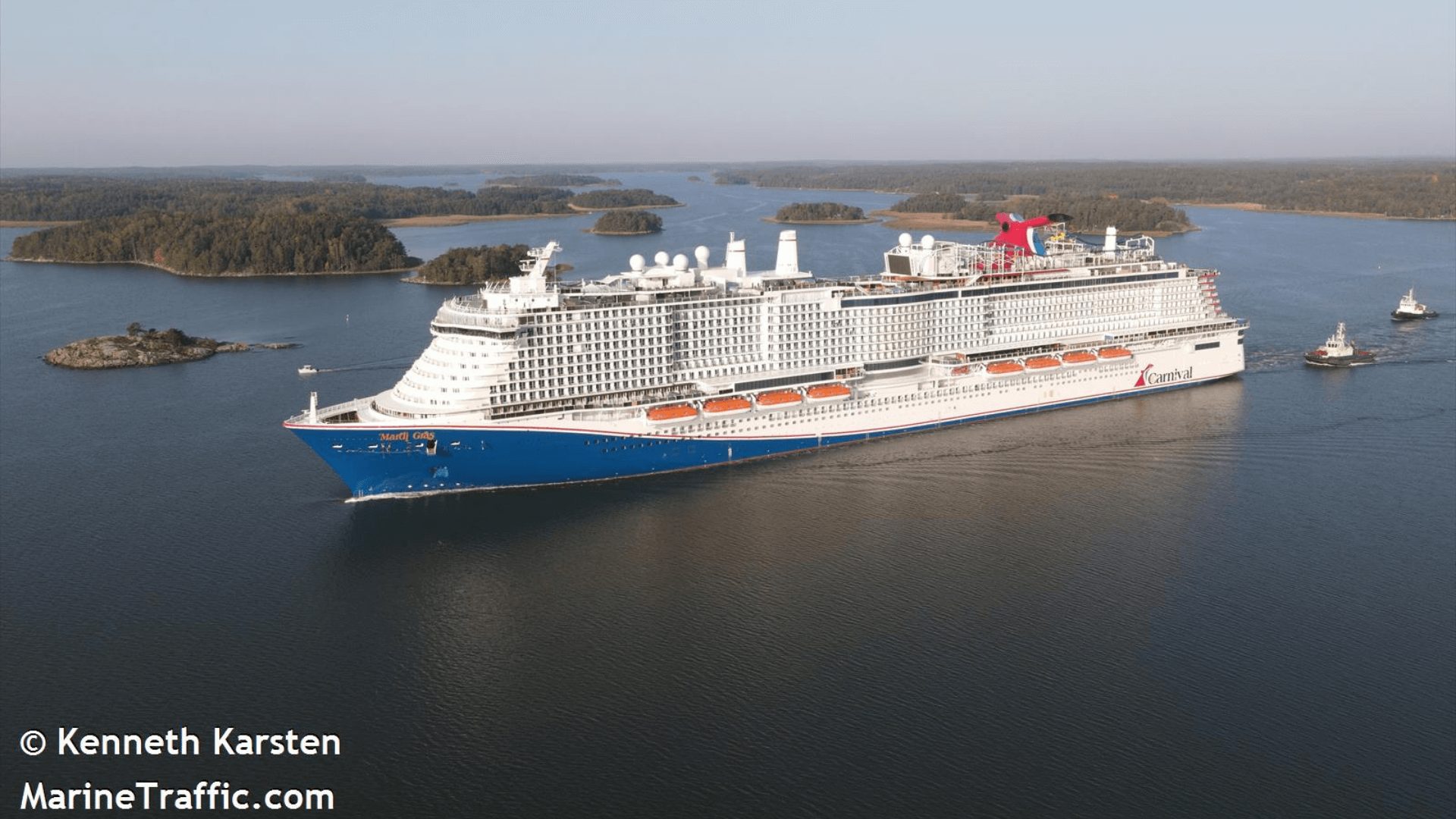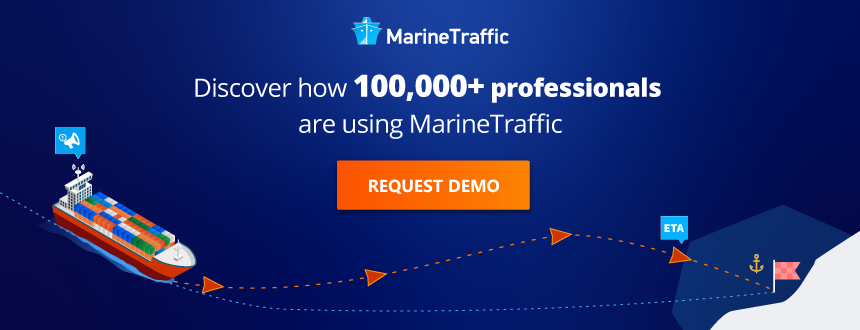Photo Credit: Kenneth Karsten, marinetraffic.com
Cruise ships running on liquefied natural gas [LNG] are gaining popularity.
Industry heavyweights Carnival Corporation currently have four LNG vessels on their books.
The latest arrival, the Mardi Gras, made its US debut last week after docking for the first time at Port Canaveral‘s Cruise Terminal 3 – a new two-story 188,000-square-foot facility.

Photo credit: Scott Murray, MarineTraffic.com
The cruise hub is the homeport for the 181,808 GT ship, which is the first LNG-fuelled cruise ship to be based in North America. The Mardi Gras has a maximum passenger capacity of 6,500 passengers and approximately 2,000 crew members. It’s thought to have cost in excess of €1 billion to build.
“We are delivering a beautiful and highly advanced ship with world-class technology such as LNG propulsion, to name just one,” said Tim Meyer, CEO of shipbuilder Meyer Turku, as Carnival took delivery of the vessel in December last year.
“With these sophisticated systems, she will be one of the most environmentally-friendly ships to sail the North-American waters. I am very proud of our team of shipbuilders and would like to thank everyone involved for their dedication during the building process.”

Despite the ongoing challenges caused by the pandemic, Carnival Corporation currently has a total of 10 LNG ships on order from Meyer and Fincantieri.
The first cruise ship to run full-time on LNG was the AIDAnova delivered two years ago and built by Meyer in Papenburg, Germany. Last December, Costa Cruises took delivery of the second LNG cruise ship. The Iona, meanwhile, was recently delivered to P&O.
The Iona is the first British cruise ship to be powered by LNG.
“Our guests are longing to get back to sea and Iona’s summer season of UK coastal cruises, including her maiden voyage on August 7 up to her namesake island of Iona, have seen overwhelming demand,” said P&O Cruises president Paul Ludlow.
The ban on cruises in England has been lifted but ships will only be allowed to carry up to 1,000 passengers, or 50% of their capacity, until all limits on social contact end.
P&O have described LNG as “one of the cleanest fuels in the world”, but there are obstacles to its widespread adoption.
Related: Is ammonia edging ahead in future fuels race?
Overcoming hurdles
Vessels need to be developed with a specific type of engine to not only hold as much LNG as possible, but to burn it properly.
LNG has a lower fuel density than gas and diesel. This means a ship burning LNG needs to have twice as much tank space. When passengers are paying hefty sums to be onboard, space for a few more cabins helps the balance sheet.
Finnish manufacturing giants Wärtsilä, however, have already teamed up with a French engineering company to design and create a membrane tank that holds enough LNG without sacrificing space.
A short-term fix?
The cruise sector is already dabbling in LNG considerably and it’s easy to see why.
LNG is one of the cleanest burning marine fuels, reportedly reducing sulphur emissions by as much as 99% and nitrogen oxide emissions by up to 85%, according to a 2018 paper from the University of Texas at Austin.
Related: Supporting IMO E-learning: ‘An Introduction to Energy Efficient Ship Operation’
It also reduces greenhouse emissions by as much as an additional 30% and largely eliminates particulate matter from ship exhaust.
However, the World Bank has already weighed in due to it still being a fossil fuel.
“LNG is effectively liquefied methane, and methane is itself a highly potent GHG. Over 20-year and 100-year time horizons, methane is respectively 86 times and 36 times more potent a GHG than CO2. Therefore, any GHG emissions from unburnt methane released to the atmosphere – called methane leakage – can diminish or even entirely offset the theoretical GHG benefit of the use of LNG,” the bank warned.
Other options?
Companies are developing systems to achieve zero-emission shipping by combining liquid hydrogen fuel cells with battery storage by 2023.
Norwegian Electrical Systems (NES) wants to plant a 3.2MW hydrogen fuel cell onto a large vessel currently being designed by Havyard Design for the shipowner Havila.
The ambitious project would be the largest fuel cell ever placed on a major ship. Batteries are planned to store additional energy to make the system fully emissions-free.
“The ability to move to a 3.2MW fuel cell that enables the vessel to sail zero-emission for long distances along the coast will be a milestone within green shipping,” said Stein Ruben Larsen, senior vice president sales at NES.
“For tourists experiencing the Norwegian coastline it means this vessel will be able to enter the country’s unique and beautiful world heritage fjords where vessels powered by any form of hydrocarbon that produces CO2, exhaust and other emissions will be banned from 2026.”

